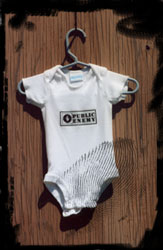
|
A BRIEF HISTORY OF PUNK PART THREE, NEW WAVE AND
TWO TONE Towards the end of the 1970’s in the UK the “Punk” movement began to dissolve from its previous agro and basic cord structure and evolve into something new. “New Wave” was an umbrella term for the many facets of this new music. As I said in the last instalment, “Punk” itself took many routes like “Hardcore” in the USA and the more “arty” Post Punk bands but in England, at this time roughly, the main route of advancement took a turn towards more accessible songs with better production, all be it, still infused with the anger of punk, BUT with advanced musicianship, pop melodies, harmonies and hooks written by writers who approached pop music with the sardonic attitude and tense aggression of the previous movement.
Artists like “Elvis Costello”, “Joe Jackson” and “Squeeze” emerged with witty songs pop songs full of key boards and harmony but with an edge and often knowing cynicism not previously seen in “pop” music. In The early days of 1970 the term “New Wave” first was used by critics to describe NY bands like “The Velvet Underground” and even “The New York Dolls” - who to me are a pioneering “PuNK” Band and hold nothing in common with what I consider to be “New Wave”. “CBGB” owner Hilly Kristal used the term in 1974 to describe the band “Television”, saying, “I think of that as the beginning of New Wave.” The term itself gained much wider currency beginning in 1976 when it appeared in UK punk Fanzines such as “Sniffin Glue” and also in more mainstream magazines like the “NME” and “Melody Maker”. Early on it was actually used by “Sex Pistols” manager the late Macolm McLaren and was adopted by music jorno Caroline Coon to designate to any music that was at the time not exactly punk but related to, and part of the same musical scene. The term was attached to a large and diverse section of bands like “The Boom Town Rats”, “The Cure” and even “Ian Dury and the Blockheads” - later to be adopted more by the Two Tone movement. Music Historian Vernon Joynson states “New Wave” emerged in the UK in LATE 1976 when many bands began disassociating their selves from Punk. Music that followed the anarchic, garage band ethos of the “Pistols” was distinguished as “Punk” while music that tended towards experimentation, lyrical complexity or more polished production, came to be categorized as New Wave.
A lot of bands like “Joy Division” and “Gary Numan” – once a fully fledged punk – began to use synthesizers at around this time and this led to the “New Romantic” movement, confusing also known as “New Wave” in its early days. I was never much of a fan of this new electronic based music using machines and splashy drum pads and “Top Of the Pops” then cutting edge Video effects BUT bands like “Duran, Duran”, “Ultra Vox”, “Depeche Mode” and “Adam and the Ants” all excelled. The “New Romantics” kept the image of punk, crossed it with “Bowie” esq “Gender bending” and kept the isolation and alienation of punk songs but little else. In the US “New Wave” became a term for any band who used synthesizers where as in the UK by the early 1980’s music journalists were using the term “Synthpop” instead and “New wave” was seen as something else. AS you can see The actual term of “New Wave” is as confused and diverse as the previous Term “PuNK”. IN 1979 to all but the most dedicated Punk was dead. While many band s had abandoned guitars others craved a different musical direction with the same energy. Previously bands like “The Clash” had adopted elements of traditionally “black” music but now a new trend known as “Two Tone” took this culture mash to the next level. “2 Tone” was a “Ska” revival based around the UK, led most prominently by head of “2 Tone Records” Jerry Dammers and bands like “The Specials”, “The Beat” and “The Selector” based around Coventry and close by in Birmingham. This sound was developed by 1980’s West Midlands youth growing up hearing their parents 1960s “Jamaican music” as well as punk which they then combined with elements of “Ska”, “Reggae” and “Rocksteady” as well as the current genre of “New Wave” as it currently existed.
Although a major movement in the UK, “Ska Beat” was less influential in America, although it has to be stated that the mostly punk, Horn heavy “Third Wave Ska Punk” bands like “No Doubt”, “Reel Big Fish”, “Less than Jake”, “Save Ferris”, “Operation Ivy” and even “Rancid” were directly influenced by the UK “2 tone music” and not really the original “Ska” musicians like “Desmond Dekker”, “The Skatalites” or “Toots and the Maytals”, and that they probably wouldn’t exist without it! http://www.mixcloud.com/digitalBYbirth/new-wave-ska-and-two-tone-mix/ Read earlier parts of this piece here
|

